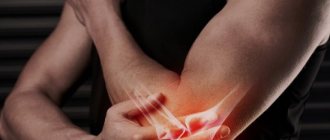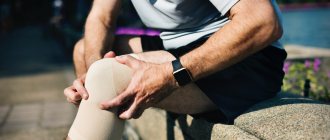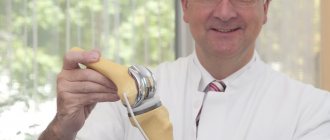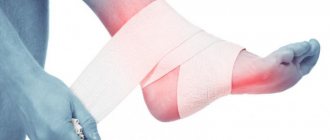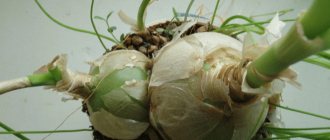There is nothing superfluous in our body. Each “gear” pushes the other, forcing the body to work properly as one large system. But parts wear out and fail, like any technically complex structure. And here it’s up to you to decide: periodically arrange medical examinations for your organic “equipment” or use expensive means for treatment. In the article we will talk about how to protect joints, prolong mobility and youth, and also what to do if changes in the joints have already begun.
Youthful joints
Unless you are the hero of the Hollywood movie Benjamin Button, then with age you are not in danger of rejuvenation.
Old age and wear and tear of the body is a natural and inevitable process, but it can and should be delayed as much as possible. Of course, some parts of the body easily respond to preventive and even corrective methods in the fight for youth. With joints, the situation is more global, more resource-intensive and more thorough. But it's worth it anyway. Why?
Because, in fact, we hold ourselves together on our joints. As long as you move painlessly and energetically, you are young. As long as your spine bends, you are young. As long as you don't shuffle the floor like Werther the robot, you're young. As long as you can calmly bend down to your toes without fear of being painfully stuck in this position, you are young. But without proper support, this condition will not last long. On average, by the age of 25, joints begin to age and lose elasticity. It sounds counterintuitive, but bodybuilders and professional athletes wear out their joints faster than the average person with average mobility.
So, in addition to honor, joints also need to be protected from a young age.
What does joint health depend on?
Lifestyle for strong joints
This is a whole range of measures to maintain the tone of the musculoskeletal system. First of all, nutrition, along with which the body must receive the necessary vitamins and minerals so that the vessels use this resource for as long as possible and maintain quality. Vitamins most valuable for joints and ligaments:
Drinking regime for healthy joints.
Water is a source of life-giving moisture for joint (synovial) fluid. The joint is isolated from the “external world”, there are no blood vessels in it, so the only source of nutrition for it is synovial fluid. Viscous, yellowish, acting as a shock absorber between cartilages. The quality of the fluid and the life expectancy of the joints depend on how well the body is provided with water.
Metabolism, hormones and joints
Weight and its fluctuations have a significant negative impact on joints. Just imagine the load on the legs of a person weighing 55 kg and 105 kg. The entire skeletal system, tendons, ligaments and muscles suffer. But not only from the physical pressure of extra pounds, but also from metabolic disorders. It is known that as adipose tissue grows, it becomes a full-fledged hormonal organ, where leptin, the so-called slimming hormone, is produced in large quantities, but the hypothalamus does not perceive it. The hormone “walks” through the blood unbound. It becomes extremely difficult for people to lose weight and the hormone activates the sympathetic division of the peripheral nervous system. Because of this, blood pressure increases, inflammatory processes actively develop, a “favorable environment” is created for the development of blood clots, and negatively affects the musculoskeletal system. Excess fat tissue and kilograms on the scale are a trigger for pathological changes in cartilage cells, as a result of which the cartilage tissue loses its elasticity and cracks form in it - and this leads to the development of arthrosis of the knee and hip joints, gout, and osteoarthritis of the knee joints.
How to lose weight and stay healthy
Joint injuries
Excessive fanatical sports activities, careless falls, injuries, fractures, sprains, professional injuries in athletes, surgical interventions, any tissue damage can trigger irreversible consequences. For some, this process takes years and joint diseases make themselves felt only in old age, while for others, disorders and consequences appear earlier.
Even high heels and tight shoes can injure joints. This is why it is so important to use orthopedic foot correctors, silicone inserts and insoles. These simple things can seriously affect the joints of the feet, legs and spine. Regular correction and careful self-care will prolong a good quality of life, maintain health and mobility for many years.
What are foot correctors and how do they save you from arthritis?
Sports and minimal exercise
Hypokinesia is a situation in which a person’s motor activity decreases, either forced or due to lifestyle. A sedentary lifestyle, partial or complete paralysis, laziness, asthenia, or a period of illness with bed rest also play a big role in the health of the joints, provoking changes. The joint must be in motion. The minimum useful thing you can do to maintain joint tone is walking, daily minimal physical activity - climbing stairs, warming up, running, swimming pool. Heredity Dysplasia is a violation of the mobility and biomechanical properties of joints. Diagnosed in newborns and babies 1 year of age. Those who are unlucky enough to have such a diagnosis are at risk of developing arthritis (osteoarthritis). Some people have a defective gene that is responsible for the formation of cartilage tissue. This leads to inevitable and rapid wear of the joints and the development of diseases of the musculoskeletal system.
Treatment of osteochondrosis
Medicines and dietary supplements for joints
Joint diseases are an irreversible disease, but, like osteochondrosis, it can be slowed down as much as possible or stopped altogether. The most important thing is to start acting on time.
Alflutop
Artra
Teraflex
Don
Chondroitin
Honda Forte Evalar
Joint prostheses
The concept of a joint prosthesis includes an imitation of synovial fluid, a joint fluid prosthesis. This is a solution that is injected exclusively by a doctor into the joint cavity, filling the gap between the cartilage. Such injections are the last solution to save the joint from damage and inflammation, which is taken by a specialist.
Fermatron
The active substance of the drug is sodium hyaluronate. Fermatron is a solution for a single injection into the knee joint and is a natural substitute for joint fluid.
The drug restores the visco-elastic and protective properties of the joint fluid;
reduces inflammatory reactions; eliminates pain syndrome; increases joint mobility; stimulates the body's own production of hyaluronic acid. Indicated for any stage of osteoarthritis and after surgical interventions.
The effectiveness of the drug has been clinically proven and is achieved after the fourth injection; is administered intra-articularly at intervals of 7 days. Maintains results for a long time.
Hyalur
In addition to hyaluronic acid, the composition contains sodium chloride and chondroitin sulfate. The use of chondroitin sulfate together with sodium hyaluronate helps to significantly slow down degradation and stimulate cartilage regeneration. Performs all the functions of a joint fluid substitute - provides joint mobility and performs protective functions. Enter once. After injection into the intra-articular cavity, rest for up to 48 hours and limitation of physical activity are indicated.
Haimovis
The drug is a synovial fluid prosthesis in the form of a solution of high molecular weight hyaluronic acid. Like all prostheses, it is inserted into the intra-articular cavity by injection. It is a visco-elastic hydrogel. Performs protective functions, protects tissues and joints from damage. Stimulates the restoration of synovial fluid viscosity and effectively reduces pain, restores and preserves joint function in patients with osteoarthritis of the shoulder joint. The biomechanical and biological characteristics of the drug make it possible to use it for diseases caused by sports.
Our information
Osteoarthrosis (also called deforming arthrosis or simply arthrosis) is a disease in which intra-articular cartilage is destroyed. Its wear and tear, in turn, entails painful changes in other parts of the joint: on the surfaces of the bones, in the joint capsule, muscles and ligaments surrounding the joint.
The main cause of arthrosis is a metabolic disorder in cartilage tissue. Unlike arthritis, with arthrosis there is usually no inflammation, but in the later stages of the disease the inflammatory process often occurs.
Food for joints
What do joints eat?
- Protein
, as a building element of the whole organism, is vital for joints. There should be neither more nor less. Normally, 100 to 120 grams of protein per day. Depending on lifestyle, amount of physical activity and body type. Amino acids supplied with protein foods are a building tool for muscles, ligaments, cartilage and joints. Protein is the basis of synovial fluid, which contains joints.
- Jelly, jellied meat, aspic
- rich in proteins, which are necessary for cartilage and joints. In addition, jellied meat cooked in steep broth contains collagen, which in the form of jelly takes on the most effective form for absorption by the body.
- Fish
, especially fatty fish, rich in OMEGA-3, are necessary for the body to produce synovial fluid in sufficient quantities. In addition, foods rich in PUFAs perform a protective function and prevent destruction and dystrophic changes in the musculoskeletal system.
- Vegetable oils
- Excellent for both external and internal use. Regular use of oils for massage purposes improves blood flow and tissue nutrition. Taking oils internally saturates the body with valuable substances from the inside. For example, flaxseed oil contains potassium, zinc, magnesium, vitamins A, E, B, K and F, Omega fats - 3, 6, 9. A complete set of essential substances needed to strengthen the musculoskeletal system.
- Cherries, oranges, lemons
— contain large quantities of Vitamin C, which has healing properties on joints and metabolic processes in the body. Participates in collagen production processes and has an antioxidant effect.
Test yourself
The following signs may indicate the development of arthrosis::
- Pain . At the first stage, it appears in the evening, but as soon as you rest a little, it goes away. As the disease progresses, the pain intensifies, ceases to disappear during rest, and can interfere with falling asleep.
- Crunching while driving . It is associated with the formation of osteophytes - bone growths that appear when intra-articular cartilage is destroyed. In the later stages, when moving, a clicking sound may occur in the joint, and quite loudly.
- Limitation of joint mobility . It is associated both with the proliferation of osteophytes (bone “spikes”) and with muscle spasm that occurs against the background of arthrosis.
- Synovitis . This is the name for inflammation of the inner layer of the joint capsule (synovium), which is often a consequence of the destruction of cartilage. With synovitis of a joint, fluid accumulates, its surface can become hot, it increases in volume, and it hurts.
Typical lesson plan
The joint gymnastics complex consists of a number of exercises available to every person. Joint gymnastics can be done online or at home with pleasant music in a calm environment. The following movements can be used as a basis:
- Warm up the neck: slow and smooth movements of the head back and forth, and then left and right. Your shoulders should remain in place, your back straight, and your breathing even. Then you should make circular movements with your head in both directions.
- Warm up your fingers. You need to stretch your arms forward, then begin to clench your fingers in a fist. Then you should stretch your wrists by slowly raising and lowering your hand, making circular rotational movements in both directions.
- Working with the upper shoulder girdle. You need to raise your arms at shoulder level, bending at the elbow joint, and then begin rotational movements towards and away from yourself.
- Warm up the back and lumbar girdle. To perform the exercise, you need to get down on your elbows and knees, bend your back first down and then up. Then you need to put your hands on your lower back and slowly rotate your torso in a circle.
- Warm up the pelvis and knees. First you need to lift your knee forward at the level of the pelvis and move it to the side, performing springing movements. After this, slow squats are performed with your feet shoulder-width apart.
- Exercise for feet and fingers. In a sitting position, you need to clench and unclench your toes, then stretch your toes with your hands.
Each exercise described must be repeated up to 10 times, focusing on how you feel. Morning joint exercises will relieve joint pain, improve overall well-being and give a boost of energy.
Recommendations for implementation
Exercise should be beneficial and not worsen the patient's health. Having found out what exercises to work out the sore knee joint, you will need to familiarize yourself with the general recommendations.
The main rule is that you need to train regularly, since one session will not bring significant benefits. You need to set a goal to do exercises on a regular basis, even if it is difficult at first.
It is important to increase the load gradually, and not try to immediately overstrain your knees. Exercising too intensely can cause ligament rupture and muscle strain. You need to exercise wisely, and not try to train at full strength right away.
On average, a lesson lasts about 30 minutes a day. This is enough for positive results to appear and pain to disappear. You don’t need to practice for too long so as not to overstrain the problem area.
It is important that the training is supervised by a physical therapy instructor or a doctor. The specialist will tell you which exercises you can do and which not.
During exercise, there should not be any serious discomfort, and if you experience severe pain, you should stop doing the exercises. It is recommended to contact a specialist and tell about the problem. He will tell you how to train so that there is no severe pain.
If only one joint is affected, both need to be trained. This will ensure uniform blood flow and facilitate movement of the limbs.
It is necessary to adhere to the rules so that the exercises are beneficial and do not harm your health. If problems arise when performing exercises, you should immediately contact a specialist and adjust the training procedure.
Diagnostics
An experienced doctor will suspect arthrosis in a patient after a conversation and examination. However, additional studies are needed to confirm the diagnosis.
- X-ray of the joint is the main method for detecting arthrosis. The pictures clearly show the narrowing of the joint space, the presence or absence of osteophytes. Taking these and some other signs into account, the doctor can assess the stage of the disease.
- Ultrasound of joints is an informative and modern examination method. It has a number of advantages: accessibility, mobility, speed. Makes it possible to examine cartilage, soft tissues, determine the presence and amount of fluid in the joint cavity, which is not available with X-ray examination methods.
- Arthroscopy . In this case, a small incision is made above the problem joint, into which an instrument consisting of a mini-camera and a lighting device is inserted. Such procedures are also used to take biopsies from the joint. However, many rheumatologists believe that unnecessary intervention in the joint can lead to infection there, so the study is carried out much less frequently than radiography.
- Magnetic resonance imaging is a very informative method that allows you to notice even small changes. But such examination is not available everywhere.
The benefits of joint warm-up
Based on the above, it is difficult to deny the unconditional advantages that an athlete receives who does not neglect this type of warm-up. Let's look at them in more detail. So, the benefits of joint warm-up before training are as follows:
- During the exercises that follow the warm-up, the athlete’s joints wear out to a lesser extent - accordingly, “sports longevity” is extended. For professional athletes, and even for amateurs who exercise to maintain general physical health, this is an important point.
- A complete joint warm-up reduces the risk of injury during exercise “here and now.” Accordingly, the likelihood of dropping out of the training process is reduced. This is especially true for pros during preparation for various competitions.
- In preheated muscles, biochemical processes are more active, due to which the muscles are able to demonstrate a higher strength potential. The effectiveness of sports activities increases by an order of magnitude.
- The neuromuscular connection (or, more simply, the connection between the brain and the muscles) becomes stronger and more perfect due to the involvement of more motor units if a non-specific warm-up is performed before the main activity. Plus, due to the same phenomenon, intermuscular coordination improves, that is, the ability of muscles to “interact” with each other, simultaneously tensing (or relaxing) to increase the energy efficiency of the effort.
@dusanpetkovic1 – adobe.stock.com
